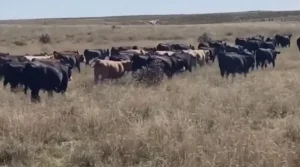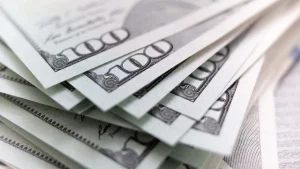Better wear your sweatpants: A heavy helping of inflation will be on the dinner table this Thanksgiving. Worker shortages, war, rising gas prices, heat waves and even bird flu are colliding to make this year’s meal substantially more expensive than it was before the pandemic. The food will still taste great, but there could be a bitter aftertaste. If you spend the same amount of money on Thanksgiving dinner that you spent in 2019, you will have substantially less food. Here’s why:
Turkey
A months-long avian flu outbreak has wiped out 6 million turkeys, or about 3 percent of the country’s total head count, which means there’ll be fewer birds at the supermarket. Farmers are also paying more to keep their turkeys fed, thanks to higher prices for wheat, corn, barley and other grains. Add in higher transportation and fuel costs, and it all amounts to a pricier bird at the center of your meal. If you spend the same amount of money you did in 2019, you’ll get 24 percent less turkey this year.
Potatoes
There’s a global shortage of spuds stemming from 2021 heat waves and droughts in Idaho, which produces one-third of U.S.-grown potatoes. Plus, a round of cold, wet weather this spring has delayed the fall harvest, leading to a gap between the end of last year’s supply and the arrival of this year’s — which means prices are soaring just in time for Thanksgiving. If you spend the same as you did in 2019, your pile of potatoes will be 18 percent smaller.
Biscuits and rolls
Wheat prices have risen to record highs since Russia’s invasion of Ukraine, which produces so much grain that it’s known as the world’s breadbasket. That’s led to more expensive bread of all types — whether baguettes or biscuits, rolls or rye. That means your dough won’t go as far this year, resulting in 18 percent fewer biscuits and rolls.
Butter
National butter stockpiles (yes, that’s a thing!) are running low, with government data showing there’s 22 percent less butter stashed away than there was a year ago. Dairy farmers have also been hit hard by rising cost and labor shortages, which means they’re producing less milk — and have fewer workers to churn that milk into butter. Overall, you’ll get 21 percent less butter than you would’ve in 2019.
Salt + Seasonings
Salt or pepper, rosemary or thyme — it’s all going to cost you more this year for a variety of reasons. Drought, heat and other weather related to global warming have disrupted crops around the world. Add to that rising fuel costs and labor shortages, and you’re going to pay more to spice up your dinner. If you spend the same on salt and seasoning as you did three years ago, you’ll end up with a less flavorful meal — by 13 percent.
Pies
Whether it’s pumpkin or pecan, chances are just about everything that goes into your pie has become more expensive. Butter, flour, sugar and eggs are all up significantly. Plus, bakeries are dealing with labor shortages, which means they’re having to pay workers more to knead, roll and crimp your Thanksgiving dessert. For the same amount of money, you’ll get 19 percent less pie this year than in 2019.
Although inflation is taking a big bite out of this year’s turkey dinner, there are signs that relief is around the corner. Global food prices are falling. Farmers are growing more, weather patterns are stabilizing and Ukraine is upping its exports. That means prices at your local grocery store may soon be easing as well. By the time next Thanksgiving rolls around, you might be stuffing a bit more food into your budget. And that sounds delicious.
This series is an examination of some of the most prominent economic themes of the year, explaining to readers their origins and impact during this highly uncertain period. These topics affect the finances of all Americans, and understanding what is happening can make you better prepared for what happens next.




























